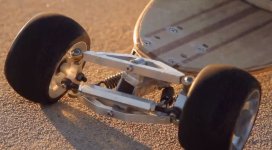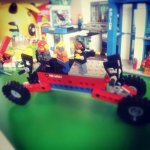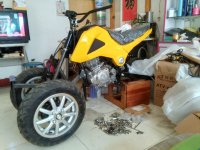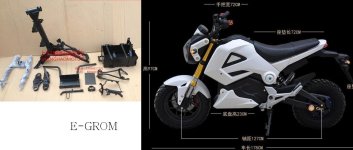sk8norcal
1 MW
https://www.kickstarter.com/projects/1690474092/lean-skateboard-leans-into-turns
cool tilting wheel skateboard truck.
not sure exactly how it works,
The wheels lean and also steer with no steering linkages. (FTC? maybe?)

cool tilting wheel skateboard truck.
not sure exactly how it works,
The wheels lean and also steer with no steering linkages. (FTC? maybe?)
How does it lean into turns?
Whenever the rider leans his/her body into a turn, the Lean Board’s wheels lean into the same direction. The steering mechanism is a simple four-bar linkage system which is attached to the board. Every joint is designed in such a way that it has two rotational degrees of freedom (Red and Blue arrows). In the XYZ coordinate system, the origin is at the center of the steering. The parallelogram linkage system's center part is perpendicular to the board. When the board is pushed down towards the direction of the turn then the wheels rotate in XY (Blue) and XZ (Red) plane. The Lean Board’s steering is designed in a such a way that all joints rotate in both XY’ and XZ’. These planes rotate at the same time causing the wheels to turn in one plane and lean into another plane. The center axis of the wheels is the intersecting line of XY’ and XZ’ planes. Each wheel has an individual axis which moves in a Conical shape, making them turn in 3 dimensions. The lean board's spherical wheels let it lean and rotate at the same time in a smooth manner. Moreover, they are big enough to go over any moderate crack making the ride smoother.










